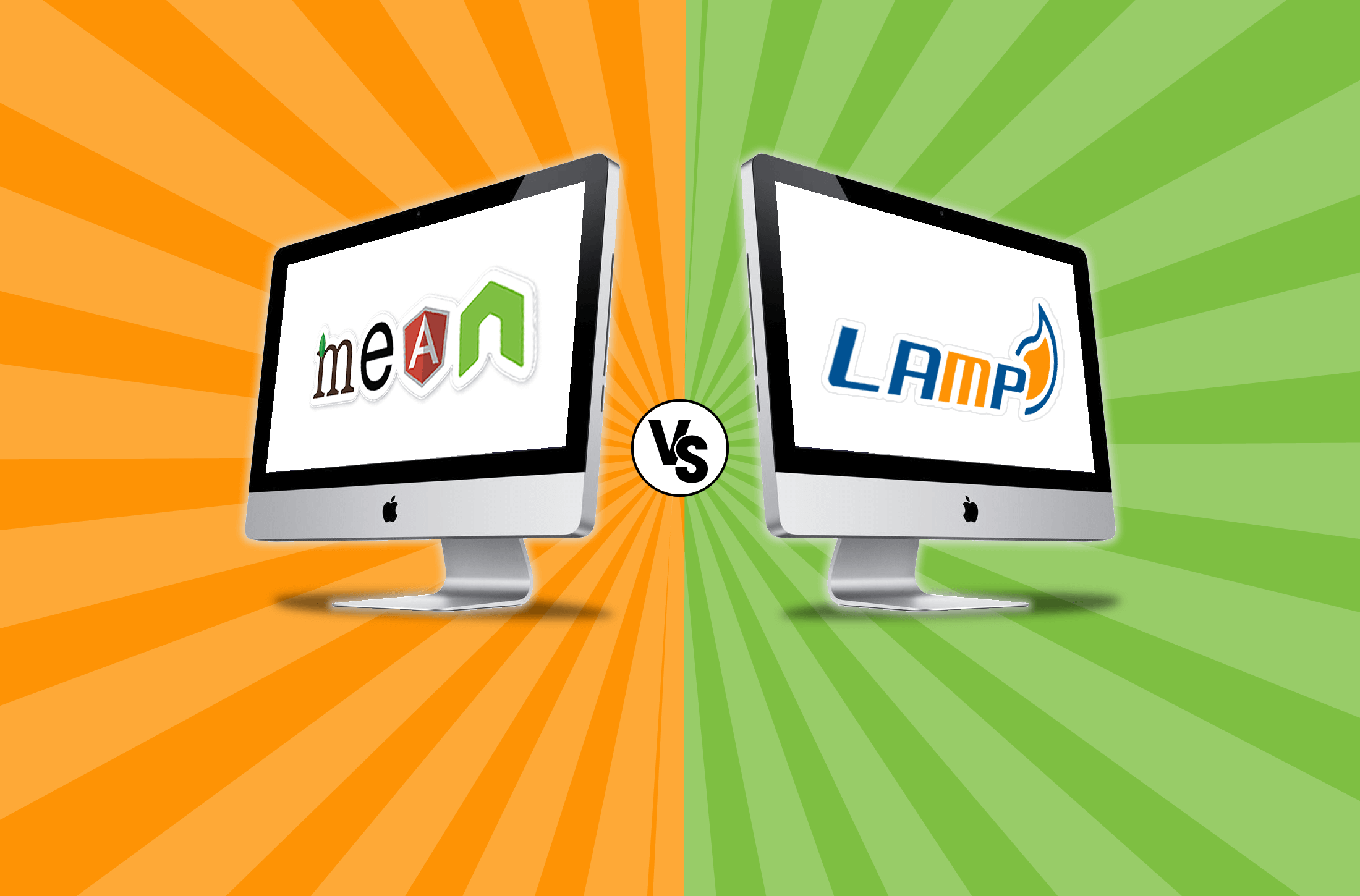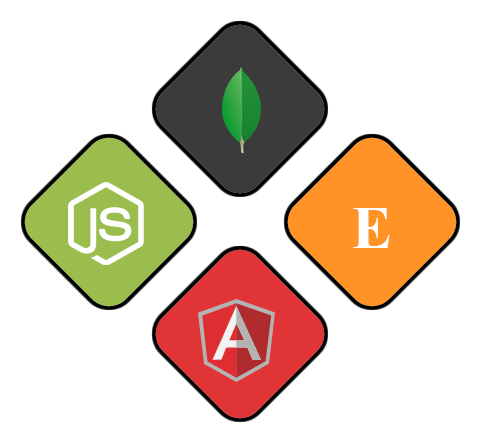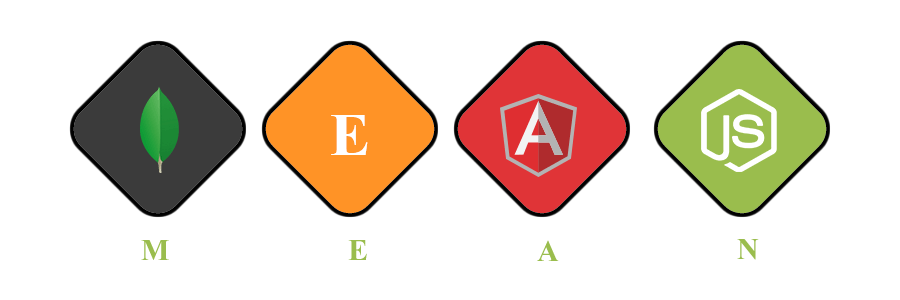MEAN Stack vs LAMP Stack

There are also variants with choices of Perl or Python added to it.But, in recent times another robust and more flexible stack became a popular choice. It is none other than MEAN stack comprising MongoDB, ExpressJS, AngularJS and NodeJS. In the quick time, it has gained popularity world over primarily because with MEAN stack development you can avoid the complexity of JavaScript. Though LAMP stack continues to be still a valuable choice for countless web developers, its waning popularity can be attributed to the huge popularity of MEAN stack. Before we start comparing these two stacks in detail, let us start with the basics.
LAMP (Linux, Apache, MySQL, PHP)

It is the most traditional stack that received widespread traction among web developers worldwide. Most importantly, it is constituted by only free, open-source and tremendously popular languages that are widely used for building dynamic websites and web apps. Every element of the LAMP stack has the support of a robust global community. Some of the key reasons that contributed to the popularity of LAMP stack is it’s open-source nature, flexibility, ease of development and deployment, a lot of customisation options, an array of security features and the support of a robust worldwide developer community.
Over the years, LAMP stack also evolved into several variants. Let us have a look at some of the key variants of LAMP stack.
- WAMP (Windows, Apache, MySQL, PHP): This variant by replacing Linux with Microsoft Windows operating system is not much different from the original LAMP stack and is very easy for the developers to start with.
- WIMP stack (Windows, IIS, MSSQL Server, ASP.net) is another variant with many similar aspects with the only difference of its dependence on Microsoft’s Internet Information Server (IIS) instead of Apache, Windows operating system instead of Linux and Asp.net instead of PHP for programming.
- LAPP (Linux, Apache, PostgreSQL, PHP): This is another variation with the PostgreSQL database replacing MySQL. This variation is particularly suited for large enterprise-level projects.
- MAMP (Mac OS X, Apache, MySQL, PHP): This is another variation of the LAMP stack with the Mac OS X operating system replacing Linux. This stack is available for both Mac and Windows computers.
- XAMPP (Linux, Mac OS X, Windows, Apache, MySQL, PHP, Perl): This LAMP stack variation consists of a cross-platform FTP server and hence all three operating systems are available with it.
MEAN (MongoDB, ExpressJS, AngularJS and NodeJS)

The MEAN stack comprising MongoDB, ExpressJS, AngularJS and NodeJS has emerged as a more modern and lean alternative to the traditional LAMP stack. Fully powered by JavaScript it also came as a money saver option for many companies boasting off a solid team of JavaScript developers building client-side apps. MEAN stack is made to build apps faster and with less vulnerability of coding mistakes because of great reusability of code. For the database, it is equipped with MongoDB, for web development framework it has Express.js, for front-end app development it has AngularJS and for the database it has the most popular and flexible JSON-powered NoSQL database.
As for variation, MEAN stack as of now has only one variant, namely MEEN stack. In MEEN stack the AngularJS framework is replaced by the Ember.js framework.
Performance
The database of a stack plays the most crucial role in ensuring pace and performance. With the MySQL database of LAMP stack, the app often suffers from the high transaction loads pulling down the loading speed and overall performance.
In contrast, the MongoDB database of MEAN stack is incredibly fast and within clustered setups, by trading off consistency it keeps the performance faster. This is why when a project can afford data loss once in a while for achieving speed and flexibility, MongoDB of MEAN stack comes as the ideal choice.

Database
MySQL (RDBMS), the database constituent of LAMP stack is a very conventional database system which lacks optimisation for fast-paced app development with flexibility and quick response rate.
MongoDB (NoSQL database) which is a key constituent of MEAN stack is flexible and cross-platform database with detailed documentation. It is enabled with JSON-style documents offering dynamic schemas to ensure optimum simplicity, ease of use and easier integration into any app.
Frontend and backend development
While using LAMP stack, you need to hire JavaScript developers for building frontend apps while for building backend you need PHP/Perl/Python, developers. Apart from this, LAMP stack comes with several different layers of navigation to access different configuration files and to use different syntax while programming. This makes the development process complex and slower.
For both frontend and backend, you don’t need PHP expert and a JavaScript expert, or a front-end and a back-end specialist. Instead, it’s all JavaScript across the stack.
Scalability
When it comes to scalability the most deterrent factor for the LAMP is the MySQL database. With a lot of requests and a high concurrency rate the performance of MySQL slumps down. With lower input or read and write ratio it performs better but with the ratio scaled up, the performance gets slower.
MEAN stack has superior advantages in respect of scaling up performance with the number of requests and inputs growing up. The stack is capable to scale up the database, frontend and backend as the rate of concurrency increases. Apart from this, MongoDB also offers support to auto-sharding and auto-failover to distribute the data evenly with automatic rearranging. This helps in scaling up the performance as the number of inputs increases.
Security
When it comes to security, both LAMP and Mean stacks are considered fully secure and stable platforms with all the crucial security elements included.
Cost
Though LAMP stack is open source and free, the actual development cost with this stack is higher as you need to hire expert frontend developers and backend developers.
Comparatively, MEAN stack comes as a cost-effective option. It is also open source and most importantly, it doesn’t require expert frontend and backend developers.
Why is LAMP still popular for web development?

LAMP continues to remain popular as a web development stack for several reasons. In spite of the recent wake of shifting allegiance to MEAN stack, LAMP seems to hold its popular presence for years to come. Let us have a look at the key reasons behind the continuing popularity of LAMP.
- Less expensive: All the LAMP elements are not only open source and free but
being capable to work with less powerful software and less expensive web hosting accounts, it also saves considerable cost for web development projects. - Tested and tried: LAMP as the most popular web development stack as of now is used by vast majority of web hosts and this makes it really dependable, tested and tried solution.
- Security: Over the years LAMP has appeared to have least security lapses and issues. Most of the security problems reported by apps built with the LAMP are caused by faults in programming.
- Unmatched Flexibility: the LAMP is a tremendously flexible platform that fits into different development cycles as preferred by developers. The LAMP offers a lot of variants and flexibility to use different frameworks and web languages. For instance, for PHP developers can use Codeigniter, CakePHP, Zend and other frameworks. Another important thing that boosts flexibility of LAMP stack is the access to source code. Apart from that, all the components within LAMP stack can be modified as per the app development needs.
- Stability and Scalability: All the components are frequently updated with elements to ensure backward compatibility and this is why developers using LAMP requires rewriting codes when coming with new app version. LAMP stack with a modular nature for all its components is highly configurable and scalable to uplift performance. Using LAMP one can build robust and high-performance apps just like the apps built with commercial languages like ASP.Net or J2EE.
- Talent Pool: LAMP as the most successful stack has been there almost from the early years of web development and naturally it boasts of the biggest pool of developer talents compared to any other stack.
- Faster Development Cycle: the LAMP is particularly great for building and creating prototypes quickly. It is ideal for quickly building apps that can run across devices. This is why the vast majority of apps built by small companies and startups mostly rely on the LAMP.
What makes MEAN stack better than the LAMP?

There are various reasons making the MEAN stack popular over LAMP stack. Let us have a look at the key aspects that make MEAN a better web development stack over the LAMP.
Cloud support of MongoDB
With a rich database layer in MongoDB, MEAN stack offers comprehensive cluster support and automatic sharding. MongoDB spreading across the cluster of servers offers automatic support for failover and for replication.
Freedom from the confined structure of MySQL
MySQL as the relational database component of the LAMP comes with a very confined structure that by pushing data always into tables at times makes feels like a big constraint. This often makes developers adding columns resulting in unbounding the tables or putting too much data into a column. In contrast, MongoDB comes with a more flexible document structure allowing to add fields in a form for extra data.
More simplified navigation with Node.js
Anyone having some experience with LAMP stack agrees that navigating the server layers with various config files becomes a very difficult task. Thanks to NodeJS this is simplified by MEAN stack.
Isomorphic code of MEAN
The isomorphic coding of MEAN stack simplifies the process of client-side rendering in contrast to the LAMP, which is full of constraints when rendering for client-side frontend application. Moreover, this also helps you avoid the need of hiring separate frontend and backend specialist or PHP or JavaScript specialist. While using MEAN you just have JavaScript all over.
The ease and simplicity of JSON
The ease and simplicity of JSON are present throughout the MEAN stack. All Angular, MongoDB, Node.js and Express speak JSON allowing the neat flow of data across all the layers without rewriting and reformatting. By using the same JSON format for all data MEAN makes development process simpler as there is no need of reformatting as and when data flows through different layers. This also helps to integrate third-party APIs very easier for apps built with MEAN stack.
The faster event-driven architecture of Node.js
The event-driven architecture of Node.js makes it quicker and more performance optimised than Apache. As the impatient app users, these days are increasingly demanding fast-paced performance, even seconds delay can make an app lose the audience. This is why for ensuring fast-paced server support Node.js as a component of MEAN stack is an obvious choice.
Node.js looks more promising
As the web language PHP leads the bandwagon as it had been used across the vast majority of CMS platforms including WordPress or Drupal. In spite of the huge popularity and robust support, the promise of PHP for future apps looks bleak, especially when we compare it with the more versatile and easier Node.js. Node.js comes with the package manager NPM which allows easy code sharing. The future developers instead of looking forward to the new CMS updates may embrace Node.js which makes this updating process easier than ever before.
Far better scope for client-side development
LAMP stack without the presence of an analogue comes with no help for client-side development. When you depend on some of the variety of PHP based frameworks that work well with MySQL, you cannot port code from one to the other and you cannot easily switch between them. The Angular of MEAN stack works in combination with JavaScript to offer clean logic and templates allowing faster and less complicated client-side rendering.
Conclusion
There is still no dearth of popularity for LAMP stack, especially for building simple single page apps. But, as MEAN stack has gained momentum with clear advantages on all fronts, this can be the standard for building future web apps.
We’re honored to mention that our efforts have been recognized by renowned B2B review and research platforms such as GoodFirms, Clutch, MirrorView, and many more.
Similar Posts

WordPress Security Best Practices: Protecting Your Website from Cyber Threats
In today’s digital landscape, websites have become integral to businesses, organizations, and personal endeavors. They serve as online representations of brands and facilitate interactions with users worldwide. However, with the increasing reliance on the internet, cyber threats have grown in both frequency and sophistication. Cybercriminals actively seek vulnerable websites to exploit for various malicious purposes, […]...

How to Choose a Top Software Development Company for Startups
Starting a successful startup is not a simple task and is even more difficult in today’s busy world. In this regard, technology stands out in assisting startups in effectively growing and managing operations while delivering optimal user experiences in all aspects. However, when building the software that drives your business, the right software development company […]...

The Evolution of AngularJS Development in 2024
The Rise of AngularJS: A Glimpse You will be amazed to discover that over 30% of the world’s developers have already incorporated AngularJS in their projects. You heard right, as this powerhouse framework has already been changing the notion of web app development, and this change is nothing but extraordinary in 2024. At Imenso Software, […]...








